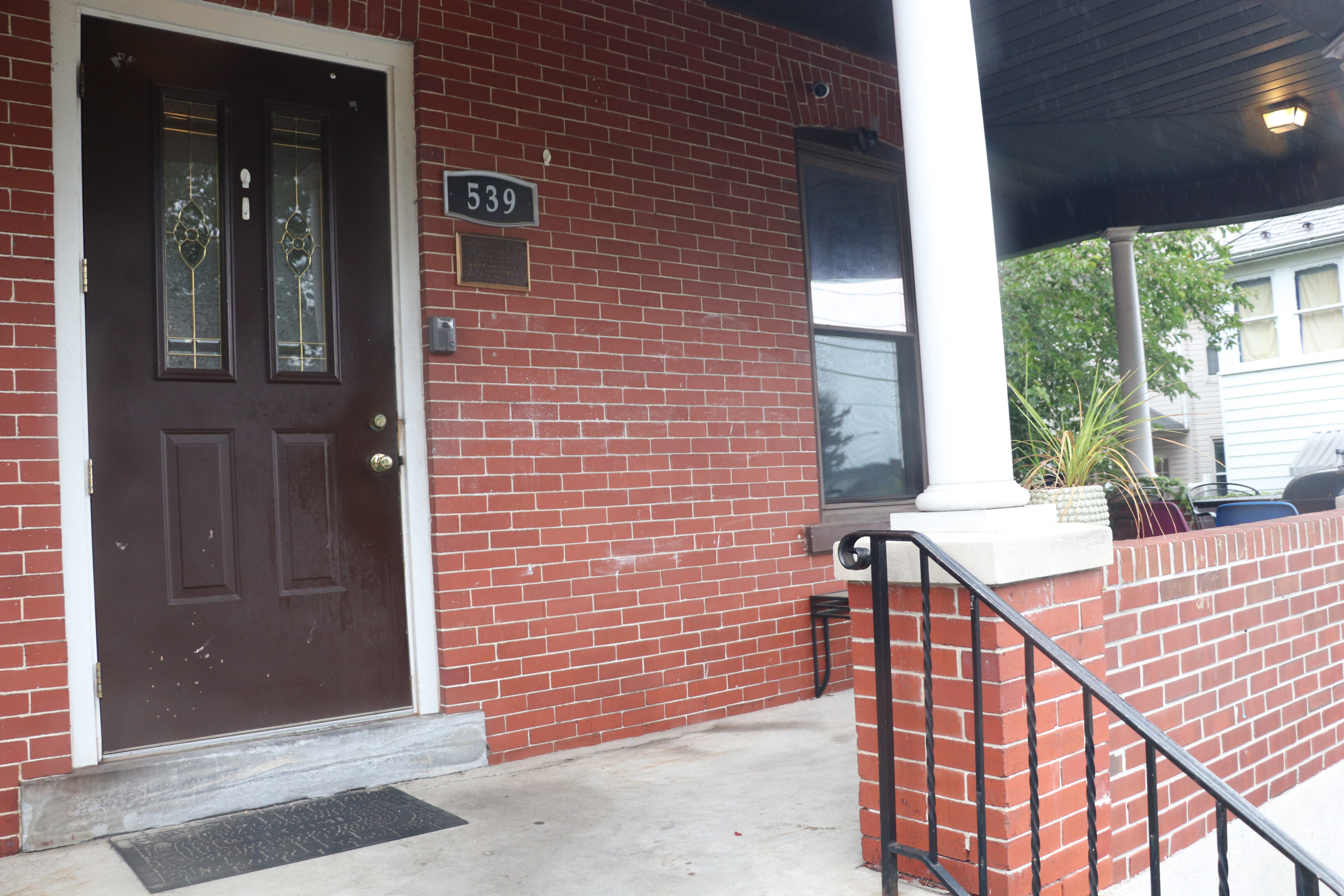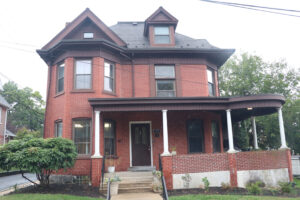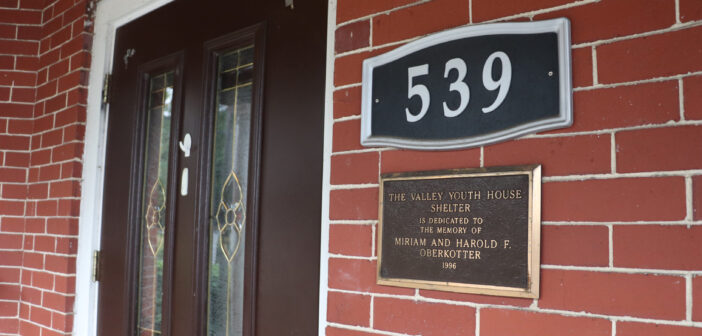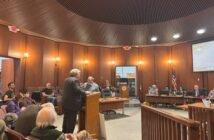Interstate 78, a major east-west highway in the northeast, runs through New York, New Jersey and Pennsylvania. According to Choose New Jersey, I-78 accommodates over four million trucks annually. It has made the Lehigh Valley a major transportation hub.
But the highway has also made the Valley a hub for sex trafficking.
Megan Sell, supervisor of Valley Youth House’s THRIVE program, a pilot program that houses survivors of trafficking ages 14-21, said it is the I-78 corridor that has brought trafficking to the Lehigh Valley.
“The reason that (trafficking) is so prevalent here is because we’re almost like this quiet hub between two large cities — between Philadelphia and New York,” said Tashina Khabbaz, a Ph.D. student at Lehigh and education specialist at The Valley Against Sex Trafficking (VAST), a nonprofit “resource hub” for the community and survivors of trafficking. “And there are other major highway routes in this area.”
The U.S. Department of State formally defines sex trafficking as the recruitment, transportation, transfer, harboring or receipt of a person using force, fraud or coercion for the purpose of exploitation or a sex act.
Human trafficking is the broader category which includes sex trafficking and other acts like forced labor.
Khabbaz said many associate trafficking with prostitution, when in reality trafficking occurs when an individual is giving something, like a sex act, in exchange for something of value, which many do for survival purposes.
“That value can be food, clothing, money or shelter,” Khabbaz said. “And that sex act doesn’t necessarily have to be sex. It could be something that’s virtual, it could be a sexual advance.”
The CNN Freedom Project estimates human trafficking to be the third largest international crime industry, reportedly generating $32 billion every year.
The U.S. Department of Homeland Security website states one of the most common misconceptions about human trafficking is it does not occur in the United States, it only happens in other countries.
In reality, according to the Polaris Project, a nonprofit organization that aims to help people understand human trafficking, 10,583 situations of human trafficking were reported to the U.S. National Human Trafficking Hotline in 2020, involving 16,658 individual victims.

The exterior of The Valley Youth House Shelter in North Bethlehem. VAST is a non-profit resource hub for the community and survivors of trafficking. (Sam Barney-Gibbs/BW Staff)
Not only is trafficking happening in the U.S., it is happening across all 50 states. According to the National Human Trafficking Hotline, victims of trafficking have been identified in suburbs, cities, rural areas and the Lehigh Valley.
The Valley’s growing number of hotels, with easy access to highways, contribute to trafficking.
Alyssa Santana, residential case manager for Bloom for Women, a “sanctuary” for survivors of sex trafficking, is a survivor herself and said trafficking in the Lehigh Valley, especially in its hotels, is very common.
“I knew this place, when I was in ‘the life,’ as a place to make money,” Santana said. “It was a popular place for women to go and make money in the hotels.”
In four years, the greater Lehigh Valley had 13 arrests for trafficking, according to the VAST website.
While that may not seem like much, said Catharine Kessack, executive director of VAST, only 1 percent of trafficking cases go to trial, because only 1 percent of victims report it. She said many individuals who are trafficked are not likely to identify as victims, often blaming themselves for their situation.
“In order for a trafficker to be taken to trial, it all stands on (the victim’s) shoulders,” Kessack said. “And that’s a lot to ask because typically in any trafficking situation, there has to be some form of force, fraud or coercion. The evidence of that is the story of the victim. And so there’s that fear aspect. It’s called a trauma bond.”
Despite the prevalence of trafficking in both the nation and the Lehigh Valley, there is a lack of awareness and conversation.
Alycha Boehm, clinical supervisor for the Valley Youth House THRIVE program, describes trafficking as “invisible,” because she said most people don’t truly understand the issue.
“People are so focused on trafficking as in ‘watch out for it in the airport, watch the people out of their driveways, make sure there’s no white vans driving by,’” Boehm said. “It’s so much more insidious and darker than that.”
Boehm said trafficking is often over sensationalized. People associate it with international travel and prostitution, but in reality many victims are trafficked in hotels, in foster care or online.
Khabbaz said many people have a “not in my backyard” mentality about trafficking and don’t want to believe it is happening in their own country, or even in their own towns.
“Sometimes the lines get blurred,” Khabbaz said. “Where when we think about sex trafficking, we think of someone coming from another country and having to be moved from location to location, but you don’t even have to be moved necessarily. Someone could be exploiting you right out of your own home.”
Khabbaz said some groups are more at risk for being trafficked.
She said the majority of people who are sexually exploited are people of color, yet white individuals who are trafficked tend to receive more attention.
Khabbaz said there is also a primary focus on girls and women who are being sexually exploited, when in reality, boys and men can be trafficked as well.
Other at-risk groups include immigrants, those from low socioeconomic backgrounds, racially minoritized people, those who identify as LGBTQ+, individuals with developmental disabilities and young people.
Boehm and Sell work specifically with younger victims of trafficking, who they said are already more at risk because of their ages.

The exterior of The Valley Youth House Shelter in North Bethlehem. VAST is a non-profit resource hub for the community and survivors of trafficking. (Sam Barney-Gibbs/BW Staff)
“I think teenagers in general, especially ones that are online, are particularly vulnerable,” Sell said. “It could be anybody who’s looking to be loved, anybody that’s experiencing a higher level of mental health (issues), a disconnection from their peers, from their families.”
Sell said while every child is vulnerable, those who come from marginalized communities are at higher risk.
She said 90 percent of children who are trafficked come from a history of sexual abuse, which results in difficulties building relationships and trust as they get older, causing them to be more vulnerable to being trafficked.
“I see those intersectionalities here (at VAST),” Kessack said, “with unstable housing, substance use disorder, mental health. And men prey on that. They prey on those vulnerabilities and it’s not right. Something needs to be done about it.”
If you believe you are a victim of human trafficking or have information about a possible trafficking situation, please contact the National Human Trafficking Resource Center (NHTRC) hotline at (888) 373-7888.






Comment policy
Comments posted to The Brown and White website are reviewed by a moderator before being approved. Incendiary speech or harassing language, including comments targeted at individuals, may be deemed unacceptable and not published. Spam and other soliciting will also be declined.
The Brown and White also reserves the right to not publish entirely anonymous comments.